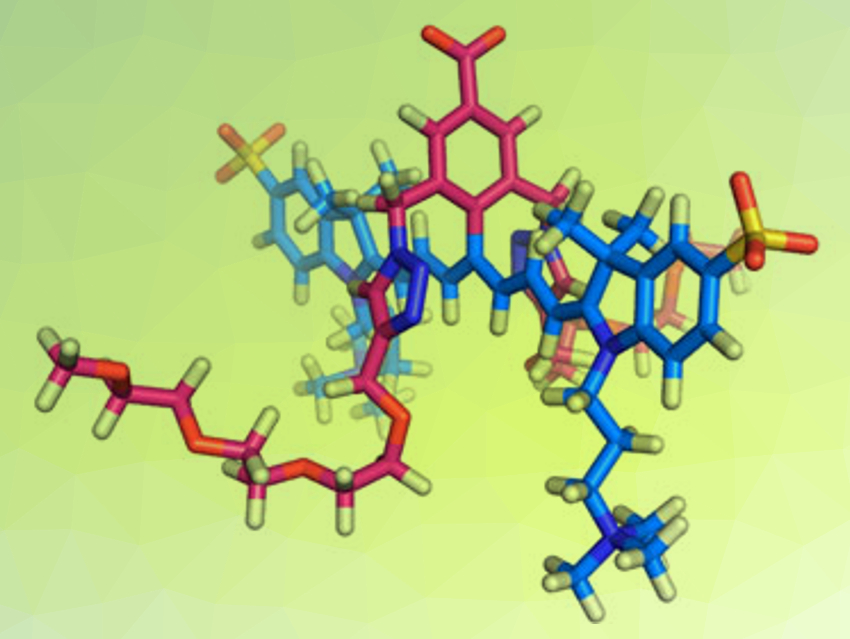Researchers can monitor biomolecular processes in live tissue by noninvasive optical methods, such as fluorescence imaging. However, the fluorescent dyes used for that purpose are often rather unstable, and photobleaching, lack of specificity, and poor pharmacokinetics are recurrent issues. Bradley D. Smith and colleagues, University of Notre Dame, IN, USA, have developed a molecular shield that stabilizes near-infrared (NIR) fluorescent dyes and enhances their functionality.
Near-Infrared Fluorescence Imaging
Fluorescence bioimaging often uses the near-infrared light region because this radiation can efficiently penetrate human tissue. Fluorescent dyes designed for this purpose usually have a flat, symmetrical molecular architecture, which favors the absorption of near-infrared light. However, the dyes also need to be water-soluble and carry functional groups for conjugating with targeting biomolecules, for example, antibodies or tumor-binding peptides. A member of this class of fluorescent dyes, called heptamethine cyanines, or Cy7, is currently under investigation for surgical applications.
However, the Cy7 molecules have their drawbacks. Their light-absorbing chromophore is vulnerable to oxygen radicals, which leads to bleaching. In addition, the flat rigid molecules may aggregate and interact nonspecifically with other biomolecules, which slows down their clearance from the body.
Sterically Shielded Dye
To tackle these issues, the team improved the chemical structure of the dye. To protect the heptamethine chromophore from oxygen attack, they introduced a voluminous and smart shield. They attached a bulky aromatic group on top of the central part of the chromophore and furnished this top group with long, shielding “arms” projecting over both faces of the chromophore, like a bird covering its nest with its wings.
The resulting dye (pictured), which the scientists call “sterically shielded heptamethine cyanine dye” or s775z, is water-soluble and provides stable fluorescence. The shielded architecture prevents aggregation and photobleaching. The dye is exceptionally stable against chemical degradation and could be stored “indefinitely”” in a common refrigerator, the researchers state.
Biomedical Applications
The team performed imaging studies in live mice and found that s775z, in contrast to all other studied dyes, did not accumulate in the blood clearance organs, but was washed out of the body quickly. Moreover, a cancer-targeted version of s775z accumulated at a high level in tumors and could be visualized by fluorescence imaging of the live mice.
The researchers suggest that the new s775z dye will be useful for a wide range of biomedical imaging applications. They point out that the change from a flat molecule to a three-dimensional shielding architecture was the key to make this class of near-infrared fluorescence dyes more stable and efficient.
- Sterically Shielded Heptamethine Cyanine Dyes for Bioconjugation and High Performance Near‐Infrared Fluorescence Imaging,
Dong‐Hao Li, Cynthia L. Schreiber, Bradley D. Smith,
Angew. Chem. Int. Ed. 2020.
https://doi.org/10.1002/anie.202004449




